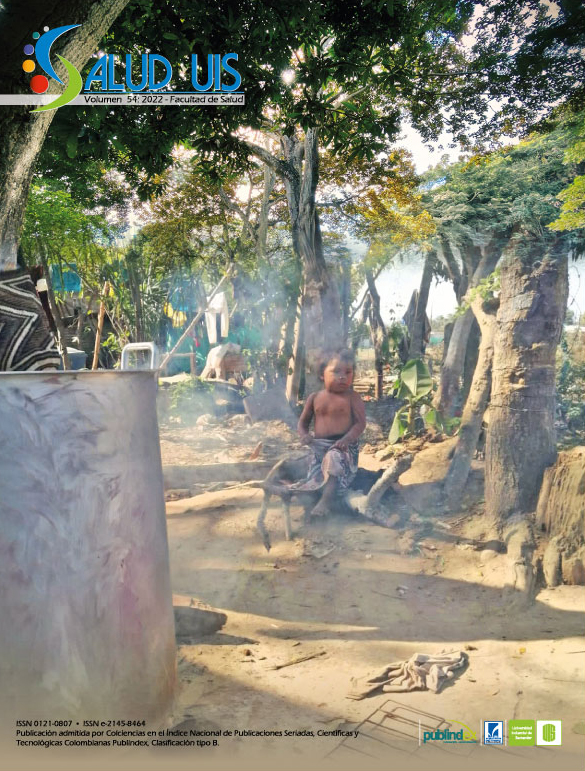Resumo
La alopecia areata es una enfermedad autoinmune que genera la caída del pelo de forma no-cicatrizante. El estrés
psicológico es uno de los factores que pueden contribuir en su etiopatogenia al incrementar las concentraciones de la hormona liberadora de corticotropina, la cual genera un ambiente altamente inflamatorio y la pérdida del privilegio
inmune alrededor del folículo piloso. Presentación del caso: Mujer de 37 años con antecedente de alopecia areata, quien presenta pérdida progresiva del pelo después del anuncio de un embarazo gemelar, el cual le desencadena un nivel de estrés psicológico considerable. El examen físico evidencia ausencia de pelo en toda la superficie corporal. Terminada la lactancia, se inicia manejo con corticoides tópicos y tofacitinib (inhibidor de las janus kinasa) con el cual consigue recuperar el pelo capilar y corporal. Dentro de los factores medioambientales, que pueden contribuir al desarrollo de Alopecia Areata, el estrés es uno de los más importantes. Por ende, conocer la fisiopatología del estrés permite entender cómo este factor ambiental dispara la aparición de enfermedades autoinmunes y por qué terapias como los inhibidores de las janus kinasas son útiles en su tratamiento.
Referências
Gilhar A, Etzioni A, Paus R. Alopecia areata. N Engl J Med. 2012; 366(16): 1515–1525. doi: 10.1056/NEJMra1103442
Ito T. recent advances in the pathogenesis of autoimmune hair loss disease alopecia areata. Clin Dev Immunol. 2013; 2013: 348546. doi: https://doi.org/10.1155/2013/348546
Pratt CH, King LE, Messenger AG, Christiano AM, Sundberg JP. Alopecia areata. Nat Rev Dis Primers. 2017; 3(1): 17011. doi: https://doi.org/10.1038/nrdp.2017.11
Rajabi F, Drake LA, Senna MM, Rezaei N. Alopecia areata: a review of disease pathogenesis. Br J Dermatol. 2018; 179(5): 1033–1048. doi: https://doi.org/10.1111/bjd.16808
Zhang X, Zhao Y, Ye Y, Li S, Qi S, Yang Y, et al. Lesional infiltration of mast cells, Langerhans cells, T cells and local cytokine profiles in alopecia areata. Arch Dermatol Res. 2015; 307(4): 319–331. doi: https://doi.org/10.1007/s00403-015-1539-1
Dainichi T, Kabashima K. Alopecia areata: What’s new in epidemiology, pathogenesis, diagnosis, and therapeutic options? J Dermatol Sci. 2017; 86(1):3–12. doi: https://doi.org/10.1016/j.jdermsci.2016.10.004
Kara T, Topkarci Z. Interactions between posttraumatic stress disorder and alopecia areata in child with trauma exposure: Two case reports. Int J Trichology. 2018; 10(3): 131–134. doi: https://doi.org/10.4103/ijt.ijt_2_18
Bansal M, Manchanda K, Pandey SS. Annular alopecia areata: Report of two cases. Int J Trichology. 2013; 5(2): 91–93. doi: https://doi.org/10.4103/0974-7753.122970
Barroso LAL, Sternberg F, Souza MNIDF, Nunes GJDB. Trichotillomania: A good response to treatment with N-acetylcysteine An Bras Dermatol. 2017; 92(4): 537–539. doi: https://doi.org/10.1590/abd1806-4841.20175435
Berbert Ferreira R, Ferreira SB, Scheinberg MA. An excellent response to tofacitinib in a Brazilian adolescent patient with alopecia areata: A case report and a review of the literature. Clin Case Rep. 2019; 7(12): 2539–2542. doi: https://doi.org/10.1002/ccr3.2484
Rodríguez-Fernández JM, García-Acero M, Franco P. Neurobiología del estrés agudo y crónico: su efecto en el eje hipotálamo-hipófisis-adrenal y la memoria. Rev Ecuat Neurol 2013; 54(4): 472-494. doi: https://doi.org/10.11144/Javeriana.umed54-4.neac
Zhang X, Yu M, Yu W, Weinberg J, Shapiro J, McElwee KJ. Development of alopecia areata is associated with higher central and peripheral hypothalamic-pituitary-adrenal tone in the skin graft induced C3H/HeJ mouse model. J Invest Dermatol. 2009; 129(6): 1527–1538. doi: https://doi.org/10.1038/jid.2008.371
Tsigos C, Chrousos GP. Hypothalamic-pituitaryadrenal axis, neuroendocrine factors and stress. J Psychosom Res. 2002; 53(4): 865–871. doi: https://doi.org/10.1016/s0022-3999(02)00429-4
Spencer RL, Deak T. A users guide to HPA axis research. Physiol Behav. 2017; 178: 43–65. doi: https://doi.org/10.1016/j.physbeh.2016.11.014
Van Bodegom M, Homberg JR, Henckens MJ. Modulation of the hypothalamic-pituitary-adrenal axis by early life stress exposure. Front Cell Neurosci. 2017; 11: 87. doi: https://doi.org/10.3389/fncel.2017.00087
Duval F, González F, Rabia H. Neurobiología del estrés. Rev Chil Neuro-Psiquiatr. 2010; 48(4): 307-318. doi: http://dx.doi.org/10.4067/S0717-92272010000500006
Zoubovsky SP, Hoseus S, Tumukuntala S, Schulkin JO, Williams MT, Vorhees CV, et al. Chronic psychosocial stress during pregnancy affects maternal behavior and neuroendocrine function and modulates hypothalamic CRH and nuclear steroid receptor expression. Transl Psychiatry. 2020; 10(1): 1-13. doi: https://doi.org/10.1038/s41398-020-0704-2
Kim HS, Cho DH, Kim HJ, Lee JY, Cho BK, Park HJ. Immunoreactivity of corticotropin-releasing hormone, adrenocorticotropic hormone and α-melanocyte-stimulating hormone in alopecia areata. Exp. Dermatol. 2006; 15(7): 515–522. doi: https://doi.org/10.1111/j.1600-0625.2006.00003.x
Katsarou-Katsari A, Singh LK, Theoharides TC. Alopecia areata and affected skin CRH receptor upregulation induced by acute emotional stress. Dermatology. 2001; 203(2): 157–161. doi: https://doi.org/10.1159/000051732
Caraffa A, Spinas E, Kritas SK, Lessiani G, Ronconi G, Saggini A, et al. Endocrinology of the skin: intradermal neuroimmune network, a new frontier. J. Biol. Regul. 2016; 30(2):3 39-343. doi: https://doi.org/10.6084/m9.figshare.3860166.v1
Siebenhaar F, Sharov AA, Peters EM, Sharova TY, Syska W, Mardaryev AN, et al. Substance P as an immunomodulatory neuropeptide in a mouse model for autoimmune hair loss (Alopecia Areata). J Invest Dermatol. 2007; 127(6): 1489–1497. doi: https://doi.org/10.1038/sj.jid.5700704
Peters EMJ, Liotiri S, Bodó E, Hagen E, Bíró T, Arck PC, et al. Probing the effects of stress mediators on the human hair follicle: substance P holds central positionAm. J. Pathol. 2007; 171(6): 1872–1886. doi: https://doi.org/10.2353/ajpath.2007.061206
Gilhar A, Schrum AG, Etzioni A, Waldmann H, Paus R. Alopecia areata: Animal models illuminate autoimmune pathogenesis and novel immunotherapeutic strategies. Autoimmun Rev. 2016; 15(7): 726–735. doi: https://doi.org/10.1016/j.autrev.2016.03.008
Ismail FF, Sinclair R. JAK inhibition in the treatment of alopecia areata–a promising new dawn?. Expert Rev. Clin. Pharmacol. 2020; 13(1): 43–51. doi: https://doi.org/10.1080/17512433.2020.1702878
Liu LY, King BA. Tofacitinib for the Treatment of Severe Alopecia Areata in Adults and Adolescents. J Inv Dermatol Symposium Proceedings. 2018; 19(1): S18–20. doi: https://doi.org/10.1016/j.jisp.2017.10.003
Ibrahim O, Bayart CB, Hogan S, Piliang M, Bergfeld WF. Treatment of alopecia areata with tofacitinib. JAMA Dermatol. 2017; 153(6): 600–602. doi: https://doi.org/10.1001/jamadermatol.2017.0001

Este trabalho está licenciado sob uma licença Creative Commons Attribution 4.0 International License.
Copyright (c) 2022 Angelica María González-Clavijo, Johiner Jahir Vanegas-Antolinez, Heitmar-Santiago Infante-Fernández, Katerine Quintero-Martínez, Sebastián Parrado-García, Santiago Piñeros-Cortés, Camilo Ochoa-Abella
